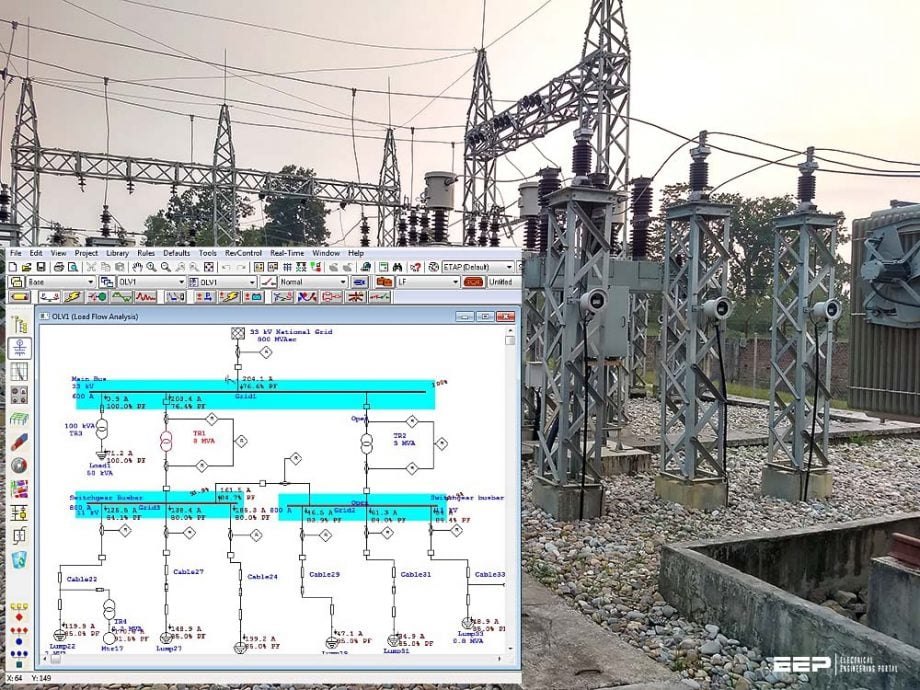Operational substation simulation
Designing and operating a substation is a tiresome and challenging task, which requires hefty capital, a well-trained workforce, and lots of time. With the ever-expanding nature of electricity distribution, the MV/LV power distribution substations are mushrooming everywhere. Sometimes, they are even installed in bulk numbers with preset design and loading conditions.

While doing so, the equipment selection is done based on the general design criteria rather than customized sizes and specifications. For instance, in most of the MV substations, the VCBs, isolators, and other active components are oversized and maintain uniformity as far as possible.
This comes often in practice to cut the cost of customized manufacturing of components. It is a common practice for OEMs to manufacture the equipment in standard sizes and ratings to allow mass production. In between all these, the designers and technicians are left to choose from the available standard sizes and specifications.
It is even a possibility that the technicians may not be aware of exact technical requirements. There are many reliable software and platforms to design and check the technical requirement in the power system. The engineers and designers must be familiar with the actual technique and methods.
This article familiarizes its reader with the perks of technical analysis of a substation, either in the design phase or in operation, based on a real-world case study performed in ETAP.
- Load flow analysis
- Short circuit analysis
- A case study: 33/11 kV substation for power distribution
- Making use of simulation results
- BONUS – Etap project of case study
- Video tutorials
1. Load flow analysis
Load flow analysis is a steady-state analysis of any power system network to determine the operating condition and parameter (Voltage, phase angle, and branch current) for a set of loading conditions. It uses a technique to solve a set of non-linear algebraic equations to approximate the unknown variables of power systems.
Most of the modern-day power utility software: ETAP, Power world simulator, PSS-E, etc. are based on the fast and accurate Newton-Raphson or fast decoupled numerical algorithm to solve the power flow equations. It helps to determine the power or current flow for each branch or bus in the network, once the most accurate value of voltage is obtained.
In the MV or any other radial substation, the load flow calculation is essential to cross-check the system for its adequacy to withstand the maximum connected load. This will give the idea of maximum voltage drop, maximum current, and power factor in the live components like busbar, circuit breakers, etc. for a particular loading condition.
Suggested course – Power System Analysis Course: Load Flow and Short Circuits


Power System Analysis
Power System Analysis Course: Load Flow and Short Circuits
Learn about power flow analysis and short circuit analysis to further your career in electrical and power engineering. 3 sections, 19 lectures, 3h 27m total length.
2. Short circuit analysis
Short circuit analysis is a procedure that calculates the fault current at each point in a network upon an occurrence of a fault in a certain section of the network, which is essential to approximate the breaking capacity and fine-tuning of current interrupting devices and protective devices.
The output of short circuit analysis helps predict the incident energy levels and planning protection coordination. It involves the conversion of the network into a combination of equivalent impedance and a voltage source to approximate the fault current at the moment of fault. For MV substation, the internal resistance of cables, transformer impedance, etc. contributes to the calculation of equivalent impedance.
However, it is equally essential to periodically maintain the short circuit analysis data over time to refine the settings of protection elements and replace them if required.










